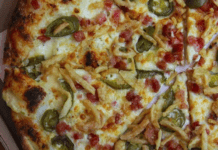When Ontario’s minimum wage jumped 20 per cent to $14 in 2018, restaurateur Erik Jayal went “mining for margins.” As the owner of Toronto restaurants Ascari Enoteca and Gare De L’Est Brasserie, Jayal looked at costs across the board — from the menu to multi-fold paper towels.
“We analyzed our recipes and figured out how we can be more efficient in our recipe creation,” he says. “We went through all our suppliers — food, dry goods, paper — and tried to find more inexpensive products.” Jayal did find savings and continues to look for efficiencies on a regular basis. “It’s a lot of effort, but we want to make sure we’re running as tightly as possible… It’s actually forced us to be better operators.”
It appears most operators coped with the hikes by raising menu prices. According to Restaurants Canada, menu inflation in Ontario reached nearly seven per cent in 2018 — the province’s largest annual increase in menu prices since the introduction of the GST in 1991.
“They raised prices as much as possible because they didn’t want to have to cut staff and cut back on hours,” says Lauren van den Berg, national vice-president, Government Relations at Restaurants Canada. “But passing these increases onto diners can have noticeable consequences.”
Restaurateurs in Ontario aren’t alone: every province in Canada has implemented or announced minimum-wage hikes in the past couple of years. In B.C., for example, minimum wage went from $11.35 to $12.65 as of June 2018. It rose further to $13.85 on June 1, 2019 and will rise to $14.60 on June 1, 2020.
Eric Nordal is project coordinator at Retail Action Network, a Victoria-based organization that fights for workplace justice. He says while some employers might be feeling a pinch, the increases in B.C. have been fairly incremental. “Restaurant and hospitality work is precarious, low-wage work,” he says. “The minimum-wage increase that happens here and in other province really makes a difference in the lives of people who work in the foodservice industry.” On the flip side, “if you pay people a decent wage, that means they have money to go out and enjoy dinner or a drink.”
For worker advocates, one major win for foodservice employees in B.C. was the government’s decision to close the gap between the lower liquor-server wage and the provincial minimum wage. The liquor-server wage ($10.10 per hour in 2017 and $12.70 in 2019) will see incremental increases every year until it catches up to the minimum wage in June 2021 — set to be $15.20.
Since 82 per cent of liquor servers in B.C. are female, Retail Action Network has called the liquor-server wage “legislated pay inequity.” Nadal says the wage forces servers to depend on tips from customers, which shifts the power dynamic. “Your customer is, in a sense, your employer,” he says. “Workers may be pressured to put up with sexualized violence or harassment by the customers… It’s harder to challenge unsafe working conditions because it affects the income they make.”
In the industry as a whole, the gender pay gap is alive and well. Mark Holmes, a professor in the School of Hospitality, Food and Tourism Management at the University of Guelph, cites Statistics Canada data showing men working in foodservice make an average hourly wage of $15.86 and women make $14.01, meaning women only make 88 cents for every dollar earned by a man.
Holmes says there are a number of steps organizations can take to shift towards equality, including providing mentoring and training opportunities, creating a succession plan that creates parity in gender representation and measuring. “The only way to know if a wage gap exists is to measure representation at all levels,” says Holmes.
Written by Rebecca Harris

















